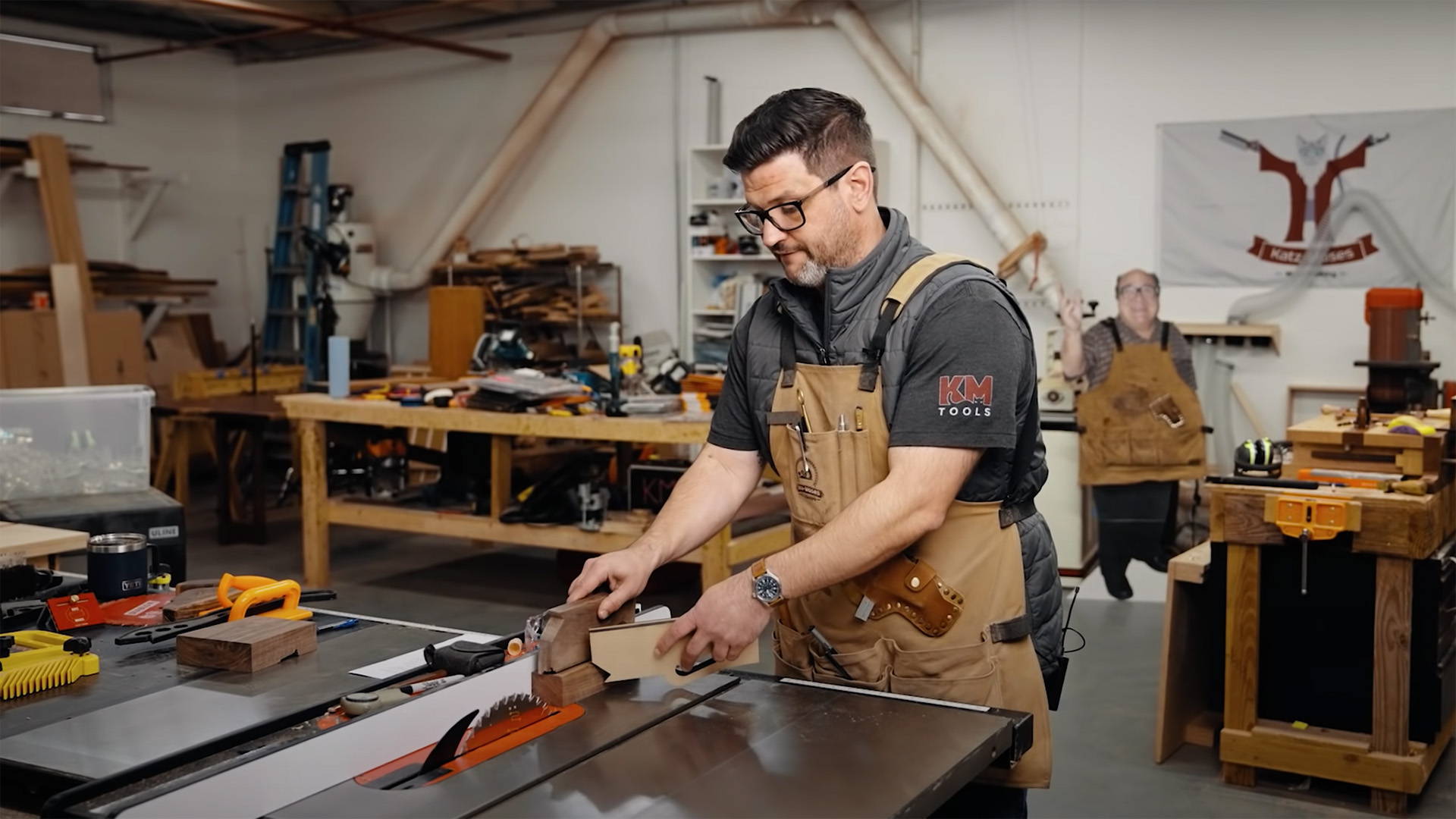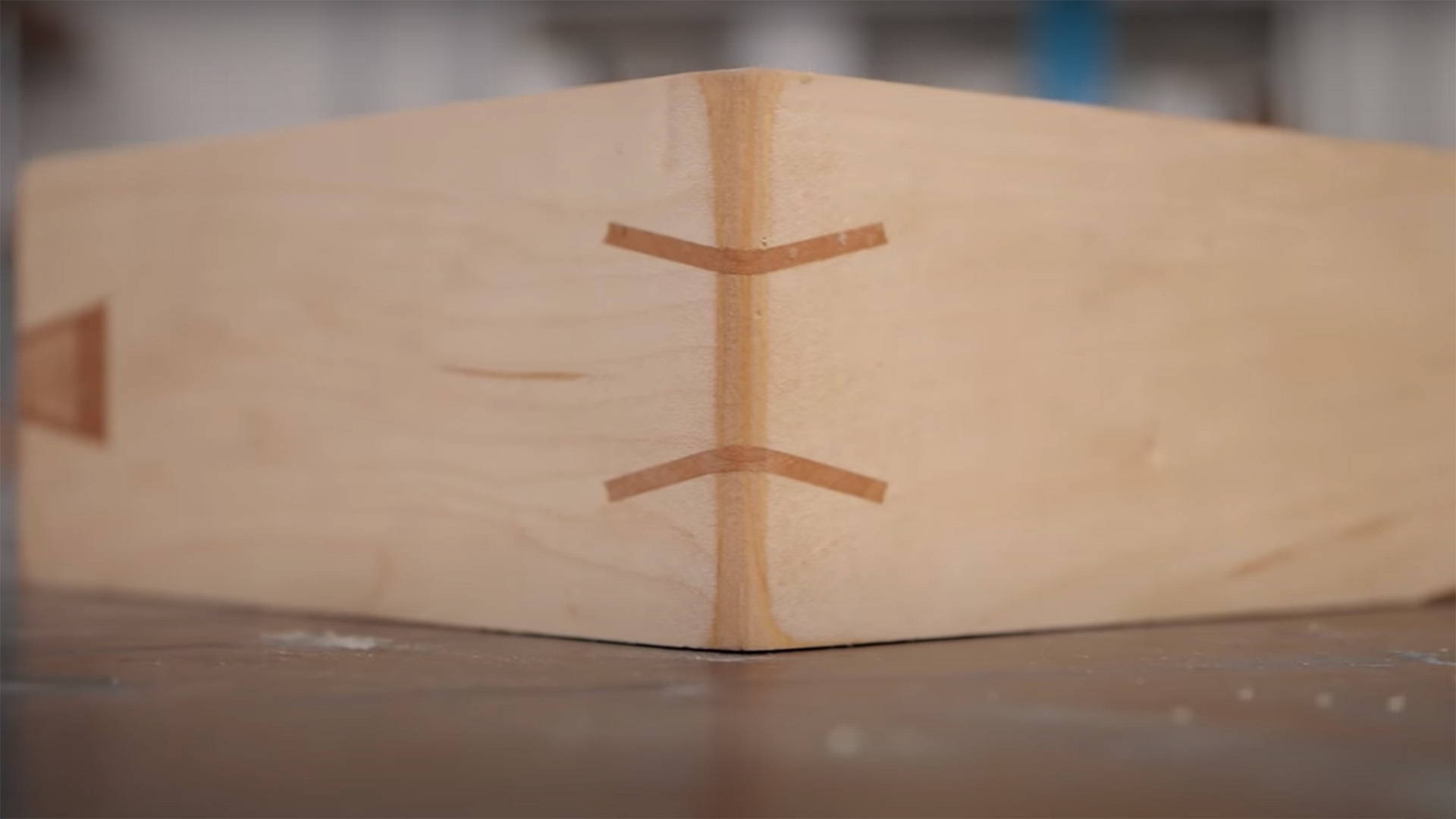Removing glue squeeze-out from inside corners is a pain in the butt — and a major offender for blotchy finishes.
Think about the inside corners of a box.
No matter how much you twist the end of that rag, you can’t seem to get all the glue. It can even get spread around, leading to a super uneven finish.
Here’s a simple trick for getting all that nasty squeeze-out in one fell swoop. All you need is a plastic straw.
1. Cut one end of the straw at a slight angle. Around 45° is good.
2. Push the point of the straw into the inside corner so it slightly compresses.
3. Run the straw along the corner, picking up all the squeeze out along the way.
4. Clean the straw and repeat if necessary, then give the corner a once over with a wet rag.
I can’t tell you how much this trick helped me get even finishes on the inside corners of my projects.
Best of all, you can simply clean the straw and reuse it for ages (we can’t forget the sea turtles, of course).
Morally opposed to plastic straws, or are they contraband where you live? Try out this 2-in-1 Corner and Glue Scraper.
The replaceable, 4-sided carbide blades are perfect for scraping glue squeeze-out (wet or dry) from hard-to-reach inside corners.
Plus, the scraper style blades leave an extra smooth finish on those areas you can’t quite reach with sandpaper.
Got any tricks for dealing with squeeze-out? Let us know in the comments below!
Follow us on Instagram @katzmosestools, on TikTok @katzmoseswoodworking, and check out my YouTube channel for more great woodworking content...
And as always, STAY SAFE IN THE SHOP!











5 comments
Jonathan Hale
I noticed the name on the side of the tool- Hongdui
PLEASE READ ON- This may not become a popular comment but I think this message is very important at this time- JKM, this points to you to start with.
When at all possible, for the sake of our country, avoid buying anything made in China or Hong Kong. Support Taiwan, for now, and any other producers, especially those whose products are made here in the USA, top to bottom, not just assembled here.
Can we encourage this change in others? I hope so, as it is vital that we drain Communist China and enable ourselves and like countries to grow independent from their influence.
Remember when China threatened to cut off our supply of medical necessities during the pandemic? That is just a taste of what is to come.
I noticed the name on the side of the tool- Hongdui
PLEASE READ ON- This may not become a popular comment but I think this message is very important at this time- JKM, this points to you to start with.
When at all possible, for the sake of our country, avoid buying anything made in China or Hong Kong. Support Taiwan, for now, and any other producers, especially those whose products are made here in the USA, top to bottom, not just assembled here.
Can we encourage this change in others? I hope so, as it is vital that we drain Communist China and enable ourselves and like countries to grow independent from their influence.
Remember when China threatened to cut off our supply of medical necessities during the pandemic? That is just a taste of what is to come.
cynthia schneider
Try hide glue.
Try hide glue.
Anonymous
When I use the straw, I just continue to clip the end off as it fills with glue, instead of trying to clean it out and reuse the end. It keeps a crisp corner on the straw, and keeps the outside clean so you aren’t dragging glue as you go.
If there’s room inside the box to work, I’ve also found that an old chisel works best. I usually let it set 30-60 minutes, and then scrape it.
When I use the straw, I just continue to clip the end off as it fills with glue, instead of trying to clean it out and reuse the end. It keeps a crisp corner on the straw, and keeps the outside clean so you aren’t dragging glue as you go.
If there’s room inside the box to work, I’ve also found that an old chisel works best. I usually let it set 30-60 minutes, and then scrape it.
Wally
To remove excess glue, I carefully tape the edges of the surfaces to be joined with blue tape. I then spread the glue and clamp. The blue tape catches the excess. Remove the blue tape and the squeezed out glue comes with. It works best for me to wait until the glue has dried a little.
To remove excess glue, I carefully tape the edges of the surfaces to be joined with blue tape. I then spread the glue and clamp. The blue tape catches the excess. Remove the blue tape and the squeezed out glue comes with. It works best for me to wait until the glue has dried a little.
Fred
The clipped straw is a great idea for removing squeeze out. To lessen the amount of water-based glue squeeze out, use less glue and rub off about a 16th from each surface edge. Clamping recoats the wiped surface and squeeze out is minimized. Wiping with a wet or damp rag in a hidden area is okay but glue that has been absorbed into pores (of Walnut, for example), could be brought to the surface and present a problem when finishing exposed joints.
The clipped straw is a great idea for removing squeeze out. To lessen the amount of water-based glue squeeze out, use less glue and rub off about a 16th from each surface edge. Clamping recoats the wiped surface and squeeze out is minimized. Wiping with a wet or damp rag in a hidden area is okay but glue that has been absorbed into pores (of Walnut, for example), could be brought to the surface and present a problem when finishing exposed joints.